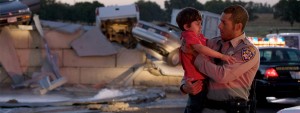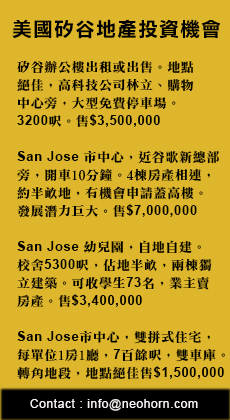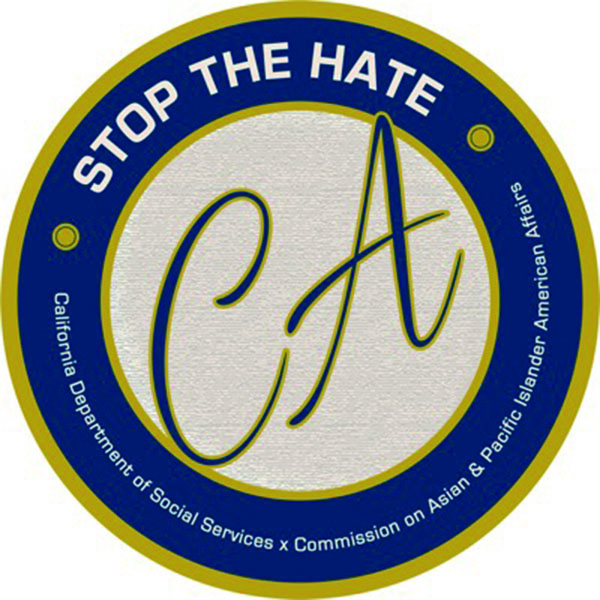Some photos courtesy of www.chp.ca.gov.
淩晨4點03分:加州高速公路警局(簡稱CHP)警官Moises Escoto醒來,準備去上班,今天他要完成一天12小時的巡邏任務。淩晨5點:他的工作從Redwood City CHP局的簡報開始。隨後警官Escoto坐上他的巡邏車,開始他從上午5點到下午5點在指定巡邏區域或路線的反復巡邏。CHP輪班時間全部是12小時,最早的從淩晨5點開始,最晚的從晚上10點開始。此外,輪班時間是重疊的,因此任何時間灣區公路上都有CHP警員在巡邏。
CHP在1929年成立,已經成為加州最富盛名和最值得尊敬的執法機構之一。要成為一個正式的CHP警員,一個人必須參加並通過一個27週的全封閉培訓專案。在訓練中心每天從淩晨3點的身體鍛煉開始,一直到下午5點結束,培訓沒有連續的週末休息日。Escoto在CHP工作五年多了,他說在培訓開始兩週後已經有超過15個人無法支撐下去而退出。作為培訓的內容,每個學員必須感受他們所使用武器的效果,以便認識到作為一個警員手中握著何種力量。Escoto曾經被高電壓雷射槍(Taser)打過,被瓦斯催淚過,也被辣椒水噴過。在他的回憶中,這些都是不令人愉快的經歷。除了強烈軍事風格的訓練外,後備警員還必須通過一個嚴格的背景調查。如果要完成整個培訓,那麼一個人需要承受羞辱,更需要擁有決心和忍耐。
最近,老中地方新聞有一個機會與警官Escoto搭乘巡邏車一起去巡邏。早晨8點和他會合,我們從參觀Redwood City辦公區開始。諸如PAS檢測設備(Preliminary Alcohol Screening Device)、槍械和一張控制椅之類的器具在訓令室備好。辦公區域後邊停放著巡邏車,有一個很大的油罐和一個汽車零件鋪(所有CHP車輛都由一個簽約汽車專業公司維修和保養)。在我們駕車上了101高速高路南向車道的過程中, Escoto向我解釋他們一般如何對違規駕駛者開罰單。巡邏車駕駛者座位旁有一個螢幕顯示編碼表,這些編碼表示在車輛周圍地區此刻正在發生的事情。
1183: 事故
1125: 道路堵塞
1179: 車禍/救護車
20002: 肇事逃逸
SUPC: 可疑狀況
STORAGE: 車輛被拖
ANIMAL: 道路上有動物
第一步是查看駕照、登記資料和保險,但如果駕駛者缺失其中一樣,那麼事情處理起來就比較複雜,所需要的時間也更長。他說,沒有一天是相同的,因為每天在道路上任何事情都會發生。有些日子安靜點,但有些日子則要讓人發瘋。在CHP工作的五年時間裏,警官Escoto已經見過很多場景-他以前負責晚班巡邏,射擊、追逐和迎頭相撞都是他親眼所見。出於安全考慮,晚班巡邏要求警官必須兩人。謝天謝地,我不用太過擔心,因為根據規定,我搭乘期間警官Escoto不可以追車。
上午8點42分,我們攔住了一名違反共乘車道行車規定的女性。一開始她並沒有停車靠邊,在警官Escoto使用巡邏車麥克風喊“PULL OVER”至少3次後,她才將車靠邊停下。Escot很小心地接近她的車,在乘客座窗戶這邊探下身索要登記資料、駕照和保險。她很明顯不開心,我無能為力,但對自己坐在車裏記錄情況感到不好意思。在開了罰單和記錄所需要資訊後,Escoto解釋說,他工作最困難的內容之一是瞭解他的行動如何影響社區和公眾。他幾分鐘內開出的罰單留在某人交通記錄上長達數年。但是,重要的是牢記CHP為什麼在那裏:保護公眾和加強安全。
如果他放棄他的責任、聽任交通違規發生,那麼你或者我遭遇致命事故的可能性就會大幅度提高。這名違反共乘車道行車規定的女性駕車而去,接著,我們接到了呼叫,又一起案件等著我們去處理。
上午9點10分,我們趕到一個事故現場:一輛黑色本田追尾一輛黑色吉普。本田損壞嚴重,車前端全部被毀。就在我站在巡邏車旁拍照,以及警官Escoto詢問其中一名司機時…砰!我們右前方突然又發生一起事故!一輛本田從後邊撞上一輛Corolla。警官Escoto迅速行動,讓他們把車停到路邊。除了呼叫一輛事故處理車趕到現場拖走第一起事故中被損車輛外,Escort處理兩起事故-包括記錄駕駛者和車輛資訊以及確認所有駕駛者不需要醫療救助在內-花了近一個小時時間。其間有兩名警官過來幫忙。其中一個在CHP工作了17年的警官說,每次他接近某些駕駛者時還是感到緊張。沒法知道駕駛者如何反應-暴力型還是怪異型?-這也是他們工作中最困難的一個內容。為了保護我們這些平民,警官們挺身而出,讓自己置身於風險中。他們中許多人或者受傷,或者失去夥伴,或者犧牲在保護他人的崗位上。重要的是記住CHP警官也是人,他們的家人每天都在擔心著他們,在等著他們回家。
與警官Escoto一起巡邏的行程結束後,我們在一個三明治店吃午餐。我們坐下來時,他向店員招手微笑,問候他們近來一切可好。我們更多地聊到了他的培訓經歷和未來志向。警官Escoto說,記在心中最重要的是事情是“不要自滿,因為它會讓你受傷或喪命。”工作多年後,很容易有放鬆一點是安全的這種感覺,而且,也很容易在常規情況下做出推斷或假設。但警官們必須記住他們需要始終保持警惕,小心周圍環境和局面。而我們能做什麼?最好的就是是安全和有責任地駕車,記住CHP警官就在那裏保護我們,讓我們平平安安上班和高高興興回家。
記者/何思倫採訪
A Day in the Life of a CHP Officer
It’s 4:03 am: CHP Officer Moises Escoto wakes up and prepares to head for the day’s 12-hour patrol shift. 5:00am: His shift begins with briefing at the Redwood City CHP department. Officer Escoto then picks up his patrol vehicle and begins his rounds of his assigned “beat”, or route that he will cover from 5am-5pm. CHP shifts are all 12-hours long, earliest and latest shifts starting at 5am and 10pm. In addition, shifts are overlapping, so there are always CHP officers patrolling the freeways in the Bay Area at any given time.
California Highway Patrol was founded back in 1929, and has become one of the most prestigious and respected agencies in the state. To become a sworn CHP officer, one must pass a 27-week long training program at a live-in academy. Each day begins at 3am with exercise and physical tasks, and ends as late as 11pm with other activities including marching, scenarios, fountain ceremony, and studying. Trainees do not get consecutive weekends off, but even when they are able to go home for a brief day or two, they are exhausted from the rigorous week. Escoto has been with CHP for over 5 years and explained that within the first 2 weeks of camp, more than 15 recruits dropped out. As part of training, every officer must experience the effects of their weapons, so that they understand what kind of power they will hold as an officer. Escoto has been shot with a taser, tear gassed, and sprayed with pepper spray during his time at the academy, which he recalls as not the most pleasant of experiences. In addition to this intensive military-style training, prospective officers must also pass a rigorous background investigation. The entire process takes a huge amount of humility, determination and perseverance.
I had the chance to ride along with Officer Escoto during one of his recent shifts. Joining him at 8am, we began with a tour of the Redwood City department office. Instruments such as PAS tests (Preliminary Alcohol Screening Device), firearms, and a restraint chair were set up in in the debriefing room. Out in the back were patrol vehicles, a large gas tank, and an in-house auto-shop (all CHP vehicles are repaired and maintained by a contracted auto specialist). As we drove out onto Highway 101 South, Escoto explained the typical process of ticketing drivers who violate driving laws. In the patrol car, a screen next to the driver’s seat displays a list of codes that signify what is happening exactly at that moment around the area.
1183: a car accident
1125: something is blocking the road
1179: an accident with an ambulance responding
20002: hit and run situation
SUPC: Suspicious situation
STORAGE: vehicle being towed
ANIMAL: animal in the road
Asking for driver’s license, registration, and insurance are the first steps, but if the driver is missing one of the above, things get more complicated and take much longer. There is no typical day, he explained, because everyday anything can happen on the road. Some days are calmer, while others seem on the brink of insanity. Officer Escoto has seen many graphic scenes during his 5 years in CHP, having previously worked the night-shift patrol. Officers are required to partner up during the evening shifts for safety, and shootings, pursuits, and head-on collisions are a few of the things he’s witnessed. Thankfully, I don’t have too much to worry about because policy states that Officer Escoto is not permitted to pursue a vehicle while I’m riding along.
At 8:42am, we pulled over a woman for a carpool lane violation. At first, she didn’t pull over, and Officer Escoto had to use the vehicle’s megaphone to say “ Pull over” at least 3 times before she finally did. Officer Escot cautiously approached the vehicle and leaned across the passenger window to ask her for registration, license and insurance. She was visibly upset and I couldn’t help but feel a bit guilty for sitting there in the patrol car, taking notes of the situation. After citing her a ticket and taking down all needed information, Officer Escoto explained that one of the hardest parts of the job is knowing how his actions could affect the community and public. His ticket can mark someone’s traffic record for years in the course of a few minutes. However, it is important to remember why the CHP are there: to protect the public and enforce our safety. If he was to forfeit his responsibility and let traffic violations happen, that’s a significantly higher percentage that you or I could get involved in a potentially fatal accident. Which brings us to the next case that we were called to, as the carpool violator drove away.
At 9:10am, we headed to an accident scene where a black Honda rear-ended a black Jeep. The damage was extensive to the Honda, the entire front of the vehicle was totaled. As I wam standing outside next to the patrol vehicle taking photos and Officer Escoto was questioning one of the drivers…BAM! Another accident suddenly happened right in front of us! Another Honda hit a Corolla from behind, and Officer Escoto quickly motioned for them to pull off the highway to the side. In addition to having to call a tow vehicle for the first accident—the entire process of having to work both accidents at once, collecting driver and vehicle information, making sure all drivers did not need further medical attention—took nearly one hour. Two other CHP officers stopped by to offer assistance, and one of them who had been with CHP for 17 years said that he still gets nervous when he has to approach certain drivers. There really is no way to know how the driver will react—violently or erratically—and this is another one of the hardest parts of the job: officers are voluntarily putting themselves in danger’s way to protect us as civilians. Many have been injured, lost partners, and died in the line of duty protecting those around them. It’s important to remember that CHP officers are human too, with families that worry for them everyday as they wait for them to come home.
When I ended my ride-along session with Officer Escoto, we grabbed some lunch at a local sandwich shop. As we sat down, he waved to one of the shop’s employees and smiled, asking how they’ve been doing. We chatted more about his training experience and future aspirations. Officer Escoto explained that the most important thing to remember is “Don’t get complacent, cause that will get you either hurt, or killed.” It may be easy after years in service to feel like it’s safe to relax a bit or make inferences or assumptions in a routine situation. But officers have to remember that they must always stay on their toes, fully aware of their surroundings and situation. The best that we can do is to practice safe and responsible driving, and remember that CHP officers are out there to protect us and get us to work and home safely at the end of the day.
Reporter / Jocelyn Ho

































